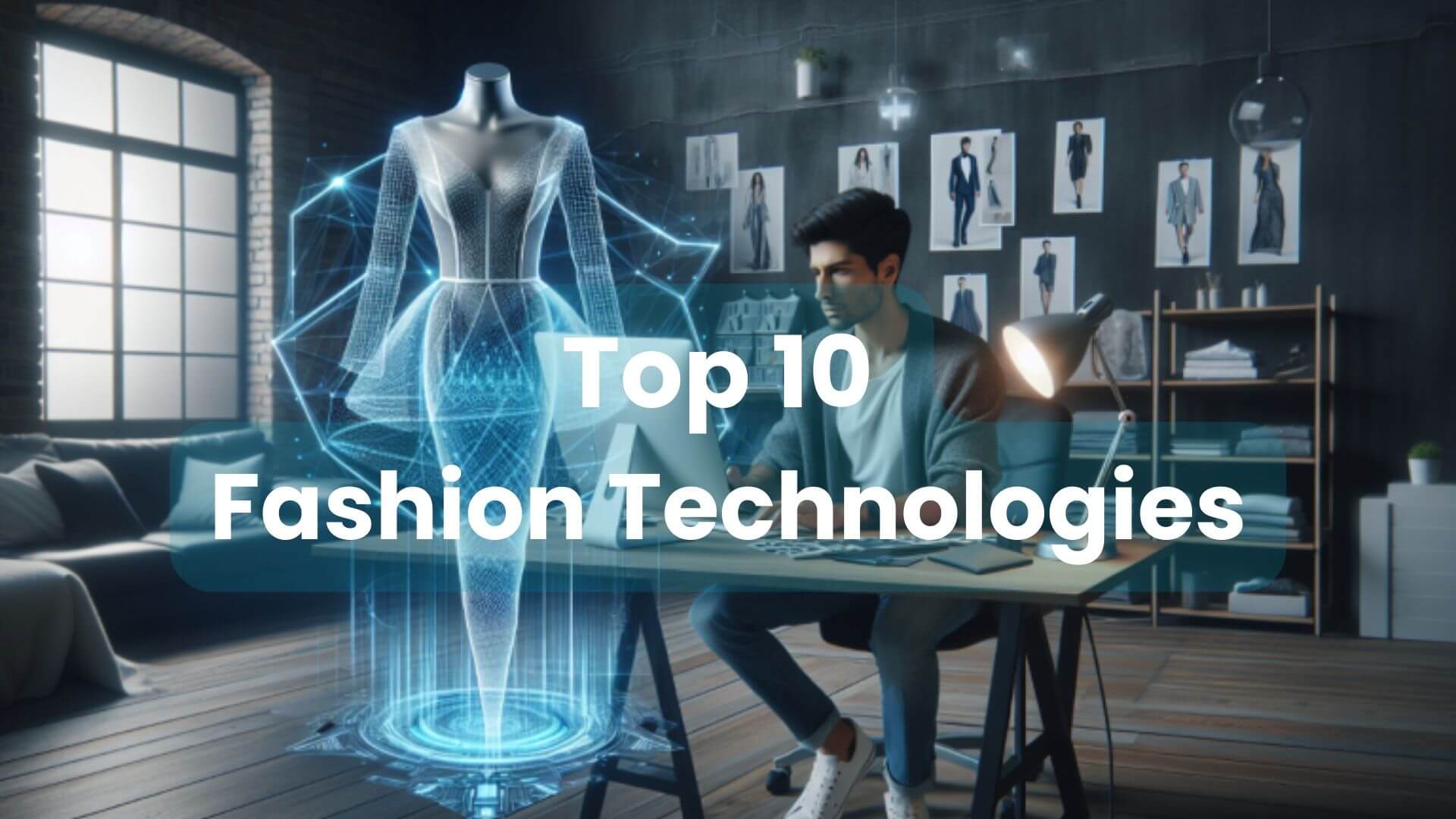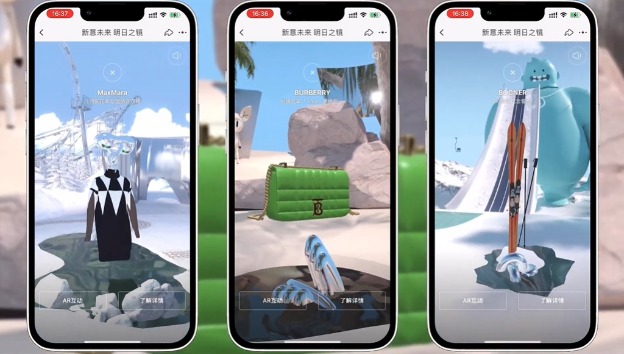What is Fashion Technology?
Technology is affecting every field and business, so why not fashion? From smart fabrics and 3D-printed garments to augmented reality shopping experiences, the intersection of fashion and technology is mesmerizing. Moreover, it is creating endless possibilities for the industry.
From makeup, garments to shoes everything is virtually amiable to try. It all due to the integration of fashion and technology.

Source: ciobulletin.com
How is fashion Technology revolutionizing the fashion industry?
Fashion technology is revolutionizing the fashion industry around the globe. The following are some real-life examples of how tech fashion is making its way and impacting fashion.

Source: GPTPlus
Product design, production, and packaging
- 3D design and printing to create intricate customer clothes and footwear is getting polarized. Adidas’ FutureCraft 4D shoes are a prime example, featuring midsoles crafted with 3D printing technology for enhanced performance.
- Computer-aided design (CAD) through software is so accurate, precise, and detailed. It reduces the labor or prototyping cost. Brands like Zara are using this technology.
Smart textile
- Smart textiles are fabrics that have been enhanced with technology to provide additional functionality. The applications for smart textiles are vast, from sports performance wear to medical garments.
- Ralph Lauren’s Politic Shirt has sensors that monitor heart rate, breathing, and movement. Moreover, it provides athletes with real-time health data. So what’s next?
- Augmented and virtual reality also revolted the fashion industry, so Sephora and Nike offered you virtual tries of their favorite products.
Perks of Fashion Technology
The fashion industry is undergoing a technological transformation with various emerging technologies and innovations. Fashion technology brings the following perks to your business.
Brand boosting and customer engagement.
By leveraging advanced technologies, brands can significantly boost their image and enhance customer engagement. This ultimately leads to stronger loyalty and increased sales.
According to a survey, thirty-seven percent of Gen Z consumers regularly shop online for entertainment. Fashion retail technology is extremely focused on providing an experience with fashion technology. For instance, using virtual fitting rooms and virtual try-on apps helps brands keep customers browsing for up to four times longer. Brands like Yucca and Wary Parker use augmented reality (AR) to allow customers to try on products virtually.

Enhanced customer satisfaction
Every brand’s ultimate goal is to keep its customers satisfied, and fashion technology is a powerful tool to achieve this. Some brands are using AI to provide personalized fashion recommendations based on individual customer preferences and past shopping experiences. This not only helps customers find the perfect products but also enhances their overall shopping experience, increasing customer satisfaction.
Improved efficiency and reduced waste
Fashion technology helps brands achieve product efficiency and reduce water use. It also allows brands to adopt sustainable practices for their products. The use of eco-friendly materials and recycling technologies helps reduce the fashion industry’s environmental footprint, promoting sustainable practices.
Latest trends in Fashion Technology
Fashion is the talk of the town, and it will remain the talk of the town. Every day, new technology is reshaping the fashion industry, and you see a very different aspect of product and fashion. Following are some emerging technologies and innovations in Fashion Technology
Artificial intelligence
Artificial intelligence (AI) has created much hype in the fashion industry. Brands have used AI to improve the shopping experience of their customers. They were using it to analyze data to increase salsa ND forecast trends. AI tools are also helping in content creation regarding fashion, such as images and videos, ensuring consistency and creativity in brand messaging. Generative AI speeds up the creative process and saves designers’ manual labor. Moreover, chat boots are doing wonderful orbs for the fashion industry. Chatbots and touchscreens are being used in stores to improve customer experience and customized product suggestions.

Tommy Hilfiger AI Stylists | powered by kivisense
Tommy Hilfiger, a famous fashion brand, is using AI so creatively. They are always at the forefront of innovation. They have introduced an AI-powered fashion stylist that’s set to transform how you dress. This isn’t just any stylist; it’s a personal fashion guide designed to understand your unique style preferences. You just need to select your preferred season: spring, summer, fall, or winter. The AI Stylist curates outfits that not only fit the weather but also reflect the latest trends and your personal taste.
3D printing and virtual prototyping
3D printing is enabling brands to make more versatile and dynamic designs and novel fabrics. It allows brands to do rapid prototyping and on-demand manufacturing. 3D printing is making way for innovation and customization, making it an intriguing trend to watch in 2024 as it allows the fashion industry to push limits and rethink traditional fabric aesthetics.
Chromatic 3D Materials and Amok Wipprecht, a Dutch high-tech fashion designer, has launched a new line of futuristic 3D-printed clothing that interacts with its surroundings via LEDs.

source: www.tctmagazine.com
Augmented reality

virtual watch try-on | powered by kivisense
Mixed reality (Apple Vision Pro)
Digital Human

Virtual Store & Metaverse
YSL’s immersive VR experience
Blockchain & NFT
Innovative Eco-materials
Future of fashion technology
Circular economy and sustainable fashion
Fashion technology innovations should aim to reduce the energy footprint of clothing manufacturing and waterless dying.
Wearable technology

source: designbuzz.com
Smart textile
Next-level automation and IoT of things
Mass customization
Conclusion
Undoubtedly, fashion technology is revolutionizing the industry. From smart watches to smart fabrics and from blockchain to enhanced customer satisfaction, everything is being transformed by fashion technology. The integration of technology in fashion promises a future where sustainability, personalization, and enhanced consumer experiences take center stage. Fashion technology not only innovates fashion but also redefines our relationship with fashion. In the future, you can expect innovative, responsible, and attuned to individual needs of fashion technology.
FAQs
Is fashion technology hype real?
What are the most popular fashion technologies?
- Generative AI
- 3D Prototyping
- Augmented Reality
- Virtual Stores
- Apple Vision Pro
- Eco-materials
- Virtual Influencers
- Blockchain
- NFTs
- Fit-Tech







